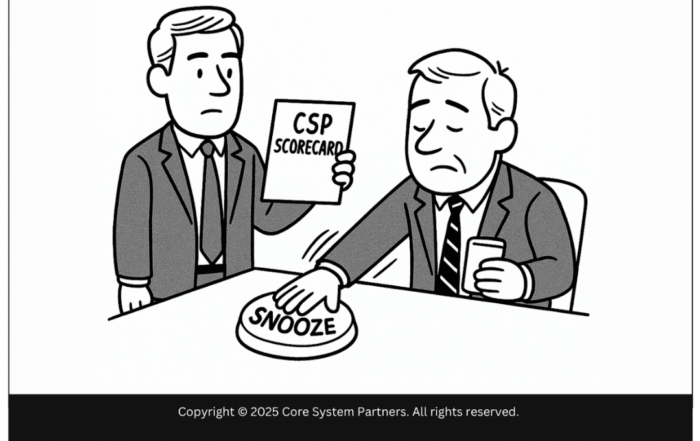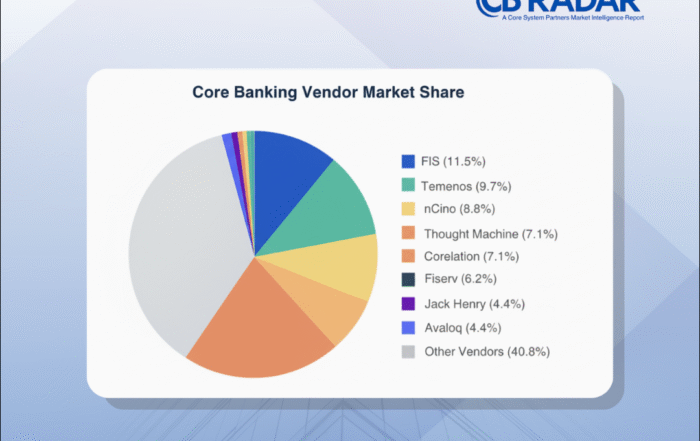
Core banking transformations fail more from people than technology—ignoring employee resistance can derail even the best systems.
TL;DR – How employee resistance can sabotage transformation
-
Change Isn’t the Enemy—Uncertainty Is – Employees don’t resist change itself; they resist unclear goals and poor communication.
-
Culture Trumps Technology – Even the best systems fail if teams aren’t bought in and engaged.
-
Hidden Resistance Drains Momentum – Quiet pushback, disengagement, and workarounds can derail transformation more than open conflict.
-
Leaders Must Champion Change – Active sponsorship, transparency, and empowering “change champions” make adoption stick.
-
Why It Matters – Addressing resistance early turns potential roadblocks into allies, ensuring smoother, faster, and more sustainable transformation.
Ignore the Human Factor at Your Peril
We’ve all seen it: banks pour millions into sleek, cutting-edge core systems… only to watch them sit idle, underused, or worse—actively resisted by the people who are supposed to make them shine. It’s a common misstep, and one that derails more core banking transformations than outdated tech ever did.
Here’s the truth: core banking transformations don’t fail because the technology isn’t up to scratch. They fail because the people aren’t on board. Even the best system is useless if no one wants to use it—or worse, if they actively resist it.
So, how do you keep that from happening? It starts by understanding why employees push back, how that resistance shows up, and—most importantly—what you can do to turn hesitation into buy-in.
1. Why Employees Resist Change in the First Place
What We Often Miss:
- Assuming people will automatically see the value of the new system.
- Overlooking legitimate fears—“Will this make my job harder?” or “Will I still have a job?”
- Leaving employees out of the conversation until decisions are already made.
The Reality:
Resistance isn’t about being difficult; it’s about uncertainty. If people don’t understand how the change affects them personally—whether it’s their workload, role, or future—they’re going to be wary. And no glossy PowerPoint is going to change that.
What You Can Do:
- Be transparent. Talk early and often about the why behind the transformation.
- Involve your teams from day one. Let them shape the change, not just react to it.
- Offer support. Training, mentoring, and transition teams aren’t just nice-to-haves—they’re non-negotiables.
2. The Cost of Unchecked Resistance
What Happens When We Ignore It:
- Resistance doesn’t just fade on its own. If anything, it festers.
- Slow adoption leads to missed milestones and blown budgets.
- Leaders assume the tech will do the heavy lifting. Spoiler: it won’t.
The Reality:
Organizations with solid change management in place are six times more likely to hit their transformation goals. Ignore resistance, and you risk missed deadlines, cost overruns, and even total project failure. Not exactly the ROI you promised the board, right?
What You Can Do:
- Budget for change management. If you’re only funding IT and ignoring people, you’re gambling with the whole project.
- Spot resistance early. Look for signs—low engagement, rising complaints, missed training sessions—and address them before they become roadblocks.
- Track adoption metrics. What gets measured gets managed.
3. Reducing Resistance Starts on Day One (Not Launch Day)
Common Mistakes:
- Launching tech before anyone understands why it’s coming.
- Cramming all training into one last-minute marathon.
- Ignoring feedback about what’s working—and what’s not.
The Reality:
Change management isn’t about forcing compliance. It’s about creating an environment where people want to embrace change. When people feel heard, they’re more likely to lean in.
What You Can Do:
- Start the conversation early. Even before you’ve chosen a system, talk to the people who’ll be using it.
- Pace your training. Learning is a journey, not a fire drill.
- Listen, adjust, repeat. Use employee feedback to fine-tune your rollout.
4. Leadership: The Make-or-Break Factor
Where Leaders Get It Wrong:
- Delegating all of change management to HR or middle management.
- Making one announcement and expecting everyone to “get it.”
- Underestimating the emotional toll of major workflow changes.
The Reality:
Leaders set the tone. Employees take their cues from you. If you’re distant or inconsistent, uncertainty spreads fast. Strong leadership creates clarity, reassurance, and momentum.
What You Can Do:
- Lead from the front. If leaders aren’t engaged in training and rollout, why should anyone else be?
- Communicate. Then communicate again. Through town halls, emails, Slack—whatever channels your teams actually use.
- Be available. Open-door policies mean nothing if people don’t believe you’ll listen.
5. Continuous Engagement: Because Change Doesn’t End at Go-Live
Missteps to Avoid:
- Thinking of transformation as a one-time event.
- Assuming “no news is good news.”
- Ignoring the feedback that could make your systems (and processes) better.
The Reality:
Resistance doesn’t vanish just because you flipped the switch. Ongoing engagement keeps employees connected and invested. If you want your transformation to stick, you have to keep working at it.
What You Can Do:
- Check in regularly. Pulse surveys, feedback loops, team retrospectives—pick your method and use it.
- Iterate based on feedback. If something’s broken, fix it. If something’s working, double down.
- Celebrate the wins. Momentum builds when people feel like they’re part of something successful.
Final Thoughts: Turning Resistance into Results
Employee resistance isn’t your enemy. It’s a signal. A sign that people need more information, more support, and a clearer vision of what’s ahead.
Banks that focus on the human side of transformation—through transparency, engagement, and strong leadership—don’t just survive change. They make it their competitive advantage.
Ready to see how your team measures up?
Take the OptimizeCore® Scorecard to evaluate your readiness for change, leadership alignment, and employee engagement strategies.
#CoreBankingTransformation #CoreBankingOptimization





